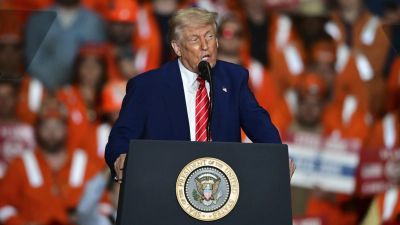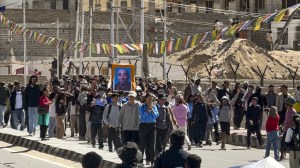Gun vs media in the Valley
With media attention fixed squarely on the general elections, a positive development in Kashmir has escaped our attention. The chairman of t...

With media attention fixed squarely on the general elections, a positive development in Kashmir has escaped our attention. The chairman of the Hurriyat Conference, Mirwaiz Maulvi Omar Farooq, deserves our thanks for directing our attention towards the freedom the Kashmir print media is beginning to enjoy with hard-hitting editorials against the culture of the gun which had not long ago threatened to destroy the unique Kashmiri culture of reverence for all religions and true acceptance of unity in diversity.
This is not to the liking of Mirwaiz Farooq, of course. He bitterly criticised the newspapers for what he called "toeing the government line under pressure." According to him, these newspapers played a positive role earlier and have now succumbed to government pressure. Obviously, when these papers highlighted the activities of various militant organisations and publicised their viewpoints and carried full-page advertisements of the "achievements" of various militant outfits, while ignoring hard news,both national and international, they were playing a "positive role".
Mirwaiz should know that the people of Kashmir have not forgotten the fact that in spite of succumbing to the militant pressure so completely, the newspapers used to face threats and used often to be forced to suspend publication for weeks together. In fact the fear of the gun had overwhelmed every aspect of life in the valley since 1989. Several journalists fell prey to the gun. The killings of Mohammad Shaban Wakeel of Al-Safa and radio newsreader Faryad are still fresh in memory. Significantly, two leading Urdu newspapers published from Srinagar have sharply reacted to Mirwaiz Farooq’s statement.
In a scathing comment Daily Aftab has said: "The pressure of the gun terrorised the newspapers to such an extent that they could neither remain impartial nor perform their duties properly. The Hurriyat itself is aware of the impact of the gun in Kashmir. Due to this very pressure newspaper writings were one-sided and the papers werelabelled by the government as agents of the militant outfits … It is surprising that Hurriyat leaders never opened their mouth about the pressure of the gun on the local press."
The daily Srinagar Times, too, has reacted in a similar vein: "Whatever Maulana Saheb has said is a half truth. The newspapers published from Kashmir are facing various pressures for the last eight to ten years. If Maulana Saheb goes through these newspapers of the past eight or nine years, he will come to know under what pressure the newspapers had to function, resulting in the trampling of those very principles of journalism which a journalist has to aide by … Whatever these newspapers reported was a distorted version. This used to be a half-truth only and this was the result of pressure. It was a journalistic dishonesty, a fraud upon the profession."
How can the Hurriyat spokesman claim that we have abandoned our impartiality, Aftab asks rhetorically. "Perhaps Mirwaiz doesn’t know that when the gun culturestarted here eight years ago, the government made the newspapers its first and main target. A Bill was rushed through the state legislative assembly which empowered the government to impose censorship. But the state of Jammu & Kashmir knows that the newspapers fought against the powers given to the government by that legislation with all the vigour they could muster…Any one who did not speak against the militant pressure on the newspapers has no right to complain now."
Having lost his own father to the culture of militancy, Mirwaiz Omar Farooq, one would hope, should himself be particularly sensitive to the destruction wrought by the gun culture. His father the late Mirwaiz had the reputation of being moderate and secular. In fact he is considered by many a martyr in the cause of what has come to be known as Kashmiriyat. Would one be right to assume that Mirwaiz Farooq himself feels trapped in the same web of militancy and is obliged to make statements that go so much against common sense and even commonknowledge?





- 01
- 02
- 03
- 04
- 05


























